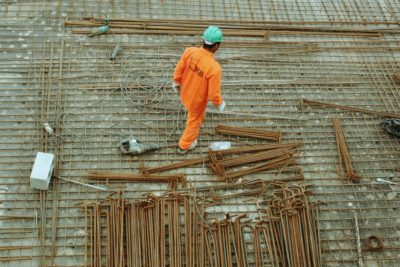The numbers we tout every month are not the best reflection of the state of our economy for working Americans
 Evaluating the labor market is a challenging task. The media and politicians lean on tangible metrics like the number of jobs created, the unemployment rate (and whether it’s trending up or down), and job vacancies, but these hide the lived reality of workers in the economy.
Evaluating the labor market is a challenging task. The media and politicians lean on tangible metrics like the number of jobs created, the unemployment rate (and whether it’s trending up or down), and job vacancies, but these hide the lived reality of workers in the economy.
What is the value of a job created if the job doesn’t pay enough for someone to support themself or their family? Do we celebrate low unemployment if people must travel unreasonable distances on unreliable transportation in order to be employed, sapping time and energy that could be invested in their children or community? Are quality jobs distributed equally across race, gender, and other groups?
“We need to understand the complexity of people’s lives, and what factors help and hinder their ability to get and keep family-sustaining jobs,” said Rob Hope, who leads ReWork the Bay in Oakland, California.
Exploring Jobs Data
ReWork the Bay seeks to tell the full story of the labor market. State of Bay Area Workers is a first-of-its-kind data tool that offers a well-rounded picture of labor market disparities for each of the nine Bay Area counties and the region as a whole. The tool enables partners and funders to make informed decisions about strategy, policy, and practices.
“We need to not just look at broad population-level data, we need to disaggregate by race, ethnicity, and gender to make sure that our strategies are actively promoting prosperity for people who have been historically excluded,” Hope said.
The data goes back 30 years and immediately brought some disturbing trends to light. For example, ReWork the Bay found that earned income has grown by nearly 70% for very high-wage workers in the last 30 years and shrunk by 9% for very low-wage workers.
“This tells such a clear and compelling story of who has benefited from the wealth generated by the Bay Area’s booming economy ¾ and makes a case for why a ‘post-pandemic’ return to normal in the Bay Area is the last thing our workers need,” said Hope.
Rethinking Jobs Numbers
Hope outlines three questions workforce professionals and policymakers can ask to dig deeper into jobs and employment numbers and uncover ideas about appropriate solutions.
1) Are the jobs being created “good jobs” that are sufficient to support working families?
While the tech sector has an outsized impact on work and workers in all parts of the Bay Area, most jobs in the region are not six-figure tech jobs. There are farmworkers in Napa and Sonoma counties, refinery workers in the eastern part of the region, and an expanding workforce of underpaid service workers in the hospitality, restaurant, retail, and rideshare sectors.
2) Does everyone have a fair shot at getting and succeeding in good jobs?
It’s not enough for good jobs to exist; they need to be accessible and welcoming for a variety of people. Are fair hiring practices being used? Do people have access to the education or training needed to compete for those jobs? If they are hired, are company cultures inclusive enough to enable everyone to advance and reach their full potential?
3) Are affordable options available to all workers to meet their basic needs like housing, childcare, and transportation?
Workers cannot reach their full potential if they are living in instability. Ensuring that their basic needs are being met is critical to creating a world where systems and institutions are more effectively working to make people’s lives better.
ReWork the Bay’s new tool and the mental shift these questions prompt can help us develop a richer understanding of the challenges to achieving shared prosperity and a truly vibrant economy.





